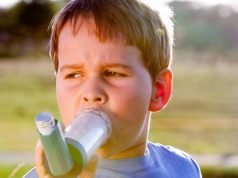Risk for daily all-cause, cardiovascular, respiratory mortality up with short-term exposure
WEDNESDAY, Aug. 21, 2019 (HealthDay News) — Short-term exposure to inhalable particulate matter (PM) with an aerodynamic diameter of 10 µm or less (PM10) and fine PM (PM2.5) is positively associated with daily all-cause, cardiovascular, and respiratory mortality in more than 600 cities, according to a study published in the Aug. 22 issue of the New England Journal of Medicine.
Cong Liu, from the Key Laboratory of Public Health Safety at Fudan University in Shanghai, and colleagues examined the correlations for PM10 and PM2.5 with daily all-cause, cardiovascular, and respiratory mortality. Data on mortality and air pollution were obtained from 652 cities in 24 countries or regions.
The researchers found that an increase of 10 µg per cubic meter in the two-day moving average of PM10 concentration correlated with increases of 0.44, 0.36, and 0.47 percent in daily all-cause mortality, cardiovascular mortality, and respiratory mortality, respectively. For the same change in PM2.5, the corresponding increases in daily mortality were 0.68, 0.55, and 0.74 percent. After adjustment for gaseous pollutants, these associations remained significant. In locations with lower annual mean PM concentrations and higher annual mean temperatures, the associations were stronger. A consistent increase in daily mortality was seen with increasing PM concentration in the pooled concentration-response curves; steeper slopes were seen at lower PM concentrations.
“We, as a medical community, have the responsibility and the opportunity to mobilize the urgent, large-scale climate action required to protect health,” write the authors of an accompanying editorial.
Several authors disclosed financial ties to the pharmaceutical industry.
Copyright © 2019 HealthDay. All rights reserved.








